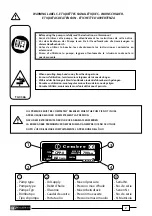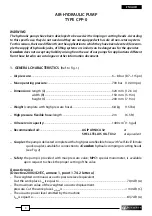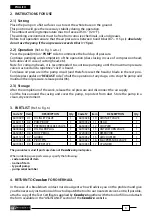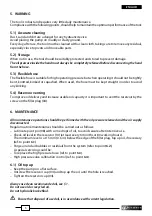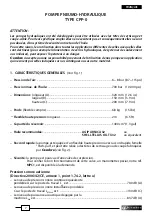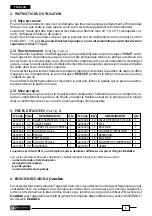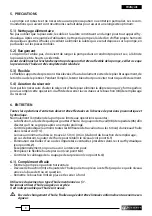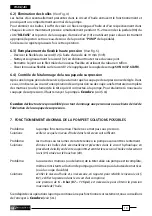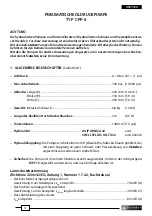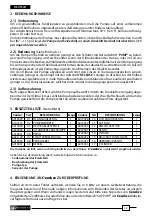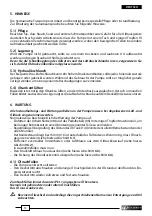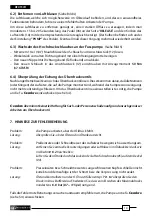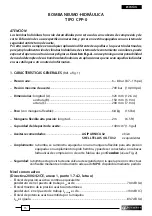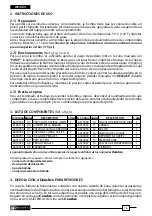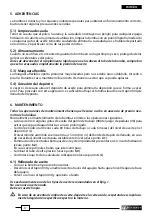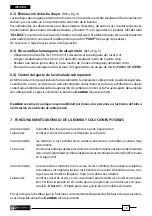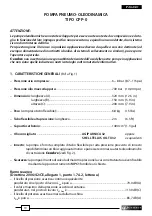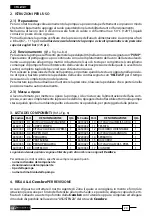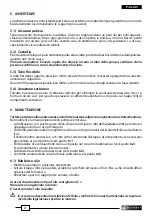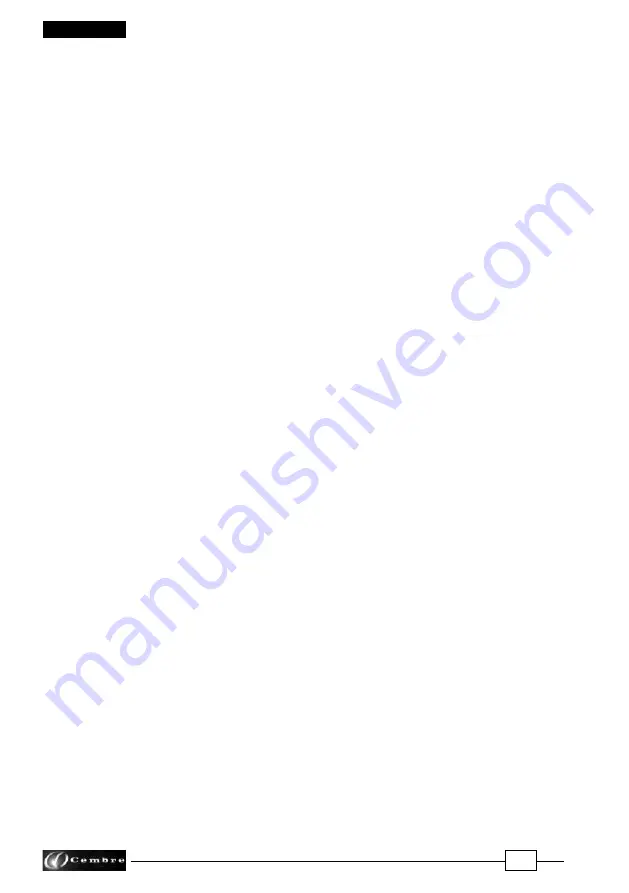
6
6.2) Purge air bubbles
(Ref. to Fig. 4)
Starting the operation the system may result no prime and therefore it is not possible to obtain
hydraulic flow into pressure.
Press the pedal (06) on the “
RELEASE
” side and at the same time (15-20 sec) use a screwdriver to
depress the valve (10) under the “
PUMP
” side of the pedal.
This operation rapidly forces oil through the hydraulic circuits, and removes any residual to the
reservoir vent.
6.3) Replacement of the high pressure hose
(Ref. to Fig. 5)
– Using a flat spanner 19 mm (3/4"), unscrew the hose from the coupler (12).
– Carefully clean the coupler (12) to remove any residual sealing materials.
– Restore the gasket (teflon tape) on the (male) thread of the new hose.
– Connect the new hose to the coupler (12), tightening thoroughly the relevant nut:
torque ratio
50 Nm
(
37.6 lbf.ft
).
6.4) Calibration of the max pressure valve
After an intensive working period, the max pressure valve can go out of calibration.
This is a visible effect when the dies (or blades) closing is incomplete.
In this case it is necessary to return the pump to
Cembre
(ref. to point
4
).
Cembre
shall not be responsible for damage or injuries caused by unauthorised adjustment of
the maximum pressure valve.
7. FAULT DIAGNOSIS
Symptom:
pump starts but oil pressure will not build up.
Remedy:
check oil level in reservoir.
Symptom:
ram in tool head advances slowly.
Remedy:
purge air from system (refer to point
6.2
). Vent the reservoir by screw (05).
Symptom:
pump will not build up to maximum pressure and the cutting/crimping operation
is incomplete.
Remedy:
check oil level in reservoir (ref. to point 6.1). Check that the air pressure is between
6 - 8 bar
(
87 ÷ 115 psi
)
, in order to achieve maximum oil pressure.
If, even after these actions, the pump still does not operate correctly, please return it to
Cembre
(see §
4
).
ENGLISH
Summary of Contents for CPP-0
Page 26: ...26 10 09 08 07 06 04 01 03 02 ...


